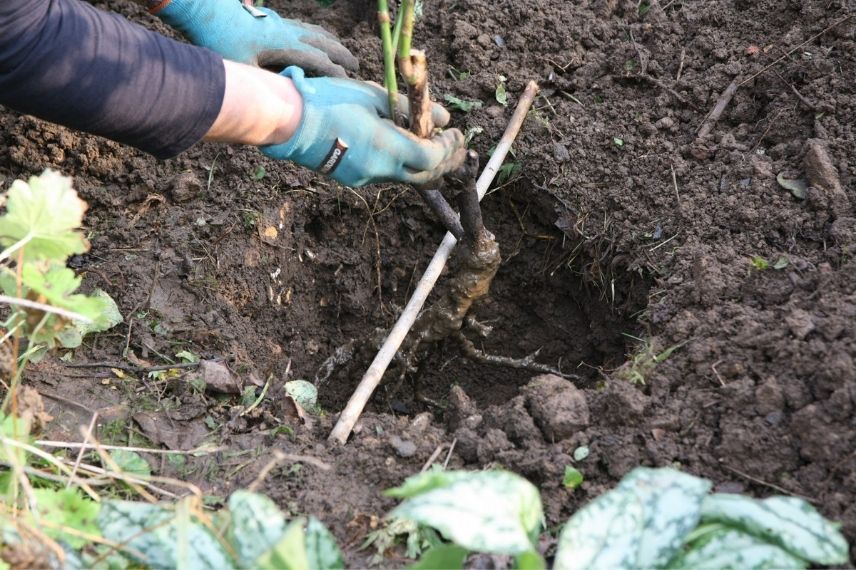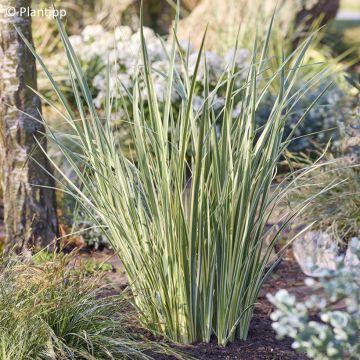
When and how to transplant roses?
Our tips to "move" your plants
Contents
Do you need to move a rose bush and wonder when and how to do it to ensure its re-establishment? Whether you need to free up space, rethink your garden layout or are moving house, transplanting a rose bush requires a few precautions to ensure success. Discover in this practical guide the best time to transplant a rose bush, step-by-step instructions, as well as our tips and advice to encourage its re-establishment and flowering.
When to transplant a rose bush? The best period
Ideally, transplanting roses is done between October and March, pendulous vegetative rest, but outside frost periods.
Materials required
-
Spade or fork-spade
-
Pruning shear well-sharpened
-
Watering can
-
Potting compost and garden compost
-
Horn meal (or other organic amendment)
-
Pralin homemade or powdered
-
Hessian cloth or heavy-duty plastic (for transport)
-
Mulch (straw, dry grass clippings, wood chips, etc.)
Discover other Trees and large shrubs
View all →Available in 0 sizes
Available in 1 sizes
Available in 1 sizes
Available in 1 sizes
Available in 1 sizes
Available in 1 sizes
Available in 2 sizes
Available in 1 sizes
Available in 1 sizes
Available in 1 sizes
How to transplant a rose bush?
It is perfectly possible to move a young rosebush to a new spot. With an older specimen established for years, chances of successful re-establishment are lower, so it is better to invest in a new young plant.
Beforehand: dig a hole twice as wide and deep as the rootball, taking care to loosen the bottom to encourage rooting.
To transplant a rosebush, work when it has lost its leaves, generally between November and February, avoiding periods of frost.
- If you can use the “express” method, the “bare roots” method is well suited to rosebushes.
- Water thoroughly the day before the operation.
- Cut back sharply the main branches to about fifty centimetres above soil level and remove small branches. This pruning balances top growth with reduced roots while limiting too vigorous sap rise at restart.
- Using a spade, dig vertically then lift the young plant. Better to be a little generous in space so as not to tear the roots.
- Remove the rosebush and brush off soil clinging to the roots.
- Trim the roots lightly.
- To maximise chances of re-establishment, coat the roots with pralin. Pralin is traditionally made from garden soil and cow dung, but a clayey garden soil works very well. Mixed with water it forms a thick paste in which you dip the roots to protect them from air and drying out. If your soil is light and free-flowing it will not adhere to the roots. In that case use powdered pralin to dilute, available commercially.
- Set the rosebush into its new hole, previously dug. You should be able to place the roots without having to bend them.
- Add a handful of ground horn (horn meal) and backfill with a rich mix of garden soil, compost and potting compost.
- Firm down and water copiously to remove air pockets.
- Mulch (dry herb clippings, woodchip (BRF), buckwheat husks…)

Transplanting a rosebush
- For full details on planting rosebushes, see our article Roses, how to plant in pots or as bare roots and watch our video Plant a rosebush from bare roots.
- If planting must be delayed, heel the specimen in, that is place it in a trench (or failing that a bucket) filled with damp sand, taking care to bury the graft union (junction between branches and roots).
- Warning! Do not replant a rosebush where another previously grew, unless you completely replace the soil to 50 cm in all directions.
Some special cases
-
Transplanting into a pot : if you cannot replant immediately in open ground, pot the rose into a large deep container filled with a mixture of garden soil and potting compost. Water regularly to keep the rootball moist and place the pot in a sheltered spot out of wind and direct sun until permanent planting.
-
Climbing rose : before working, untie branches from their support and bend them down to make handling easier. Plan a new location with a support ready to receive the canes as soon as replanting.
-
Very old rose : as their recovery is more delicate, you can take the opportunity to make a few cuttings from dry wood at the same time. That way, if transplantation fails, you’ll have a chance to preserve the variety.
Common mistakes to avoid when transplanting a rose bush
-
Do not transplant during frost or heavy rain.
-
Do not leave roots exposed to sun or wind for long.
-
Do not forget to bury the graft well.
Aftercare when transplanting a rose bush
-
Regular watering : Water generously immediately after planting, then keep soil moist in following weeks, even in winter if soil is dry.
-
Mulching : Lay down mulch (straw, dry grass clippings, BRF, fallen leaves) to retain moisture and protect roots from cold.
-
Monitoring : Check that rosebush is not suffering from wind or direct sun. If needed, protect temporarily with winter fleece.
-
Pruning and maintenance : Watch for new shoots. If any parts dry out, prune them the following spring to encourage regrowth.
-
Fertilisation : Wait until following spring to apply rose fertiliser or well‑rotted compost, to support growth without stressing plant too early.
Tips if you cannot replant your rose bush immediately
If the rose bush being transplanted is moving to another garden and must make a journey, thus having to wait before returning to open ground: it is imperative to prevent the root ball and roots from drying out.
Once lifted from the ground, wrap the root ball in heavy hessian or thick plastic. They will reduce evaporation during transport. Replant promptly.
- Subscribe!
- Contents










































Comments